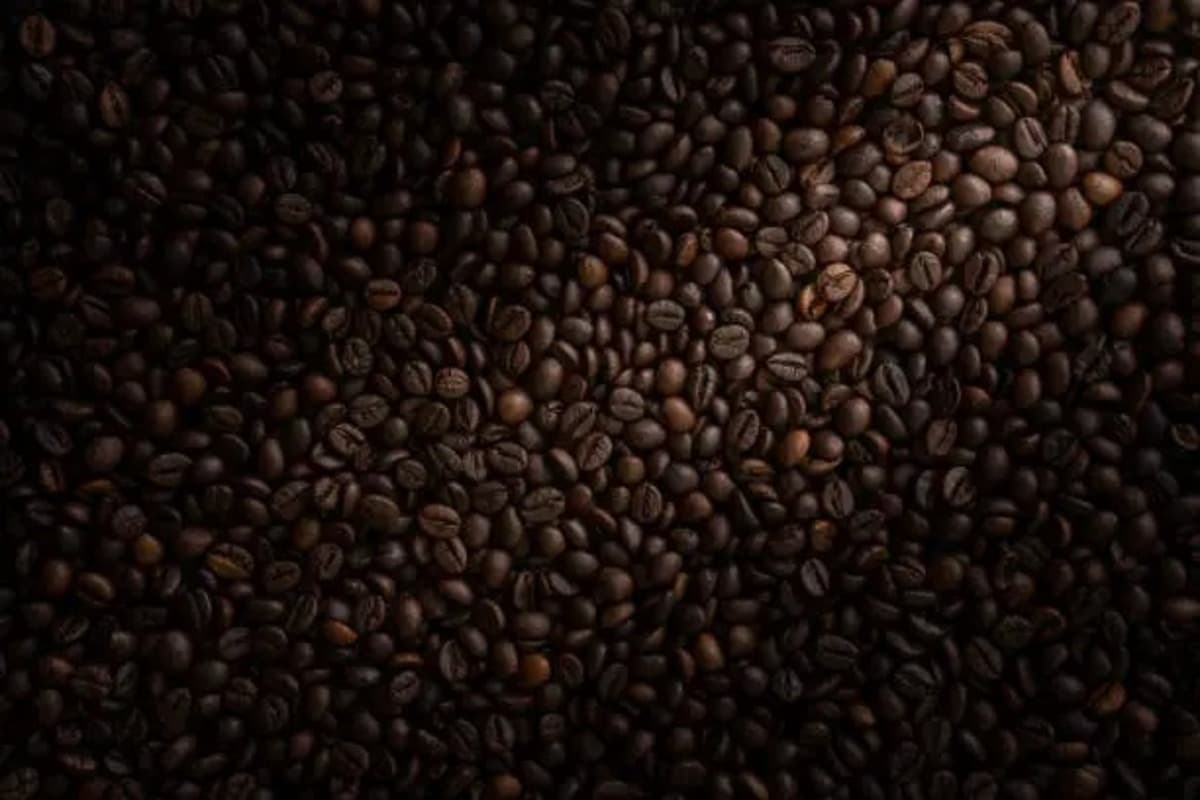Coffee markets showed mixed performance Tuesday as arabica prices posted moderate gains while robusta prices declined slightly, amid forecasts of reduced Brazilian production and news that coffee has become America’s most consumed daily beverage.
Arabica Gains on Brazilian Currency Strength
May arabica coffee futures (KCK25) closed up +10.85 cents (+2.96%) to 377.00¢ per pound on Tuesday, supported primarily by strength in the Brazilian real, which rose to a two-week high against the US dollar. The stronger currency discourages export selling from Brazil’s coffee producers, as they receive fewer reals for dollar-denominated sales.
“The currency effect is creating a significant tailwind for arabica prices right now,” said a senior commodities analyst at a major trading firm. “When the real strengthens, Brazilian farmers tend to hold back inventory, tightening available supply.”
Meanwhile, May ICE robusta coffee (RMK25) closed down -22 points (-0.42%), showing divergent performance from its arabica counterpart.
Brazil’s 2025/26 Coffee Output Forecast to Decline
Adding support to arabica prices, two major financial institutions released forecasts Tuesday predicting a significant decline in Brazil’s coffee production for the upcoming crop year.
Following a comprehensive crop tour, Dutch bank Rabobank forecast that Brazil’s coffee output in the 2025/26 cycle would drop 6.4% to 62.8 million 60-kilogram bags, down from 67.1 million bags in the 2024/25 crop.
The decline is not uniform across coffee varieties. Arabica coffee production is expected to fall significantly by 13.6% to around 38 million bags, while robusta coffee is projected to partially offset arabica’s underperformance by growing 7.3% to reach a record 24.7 million bags.
“The dry weather in 2024 significantly affected flowering and, consequently, arabica coffee production,” Rabobank stated in its report. “However, excellent yields are estimated for robusta coffee, despite a pessimistic outlook for the state of Rondonia.”
Bank Itau BBA maintained its coffee production forecast at 64.4 million bags for the 2025/26 cycle, still 3% lower than the Brazilian coffee output of 66.4 million bags for the 2024/25 cycle as reported by the U.S. Department of Agriculture.
The harvesting of conilon coffee beans (a variety of robusta) for the 2025/26 crop has already begun in some areas of Brazil’s Espirito Santo and Bahia states, according to the Cooabriel cooperative.
Weather Concerns Persist
Weather conditions continue to be a significant factor affecting coffee yields. Somar Meteorologia reported that Brazil’s biggest arabica coffee growing area of Minas Gerais received 17.9 mm of rain in the week ended April 12, or 89% of the historical average.
Brazil has been facing the driest weather since 1981, according to the natural disaster monitoring center Cemaden, raising concerns about long-term damage to coffee trees during the critical flowering stage.
Vietnam Production Issues Support Robusta
Despite the day’s price decline, robusta coffee has found support from reduced production in Vietnam, the world’s largest robusta producer. Vietnam’s coffee production in the 2023/24 crop year dropped by 20% to 1.472 million metric tons, the smallest crop in four years.
Vietnam’s General Statistics Office reported that 2024 Vietnam coffee exports fell 17.1% year-over-year to 1.35 million metric tons. Additionally, the Vietnam Coffee and Cocoa Association recently cut its 2024/25 Vietnam coffee production estimate to 26.5 million bags from a December estimate of 28 million bags.
The country’s January-March coffee exports were down 15.3% year-over-year to 495,780 metric tons, further tightening global robusta supplies.
Coffee Becomes America’s Top Daily Beverage
In a significant development for coffee demand, a new report from the National Coffee Association (NCA) released Tuesday shows that coffee has officially become America’s most consumed daily beverage, surpassing bottled water, tea, juice, and soda.
According to the Spring 2025 National Coffee Data Trends (NCDT) study, 66% of American adults now drink coffee every day, up nearly 7% since 2020. The average coffee drinker in the United States consumes three cups each day.
“Coffee holds a unique place in Americans’ daily lives – no other beverage is such a beloved and prominent touchstone,” said Bill Murray, NCA’s president and CEO. “Coffee’s popularity brews big benefits for American coffee drinkers and the entire US economy, and we expect America’s love affair with coffee to continue for many decades to come.”
Specialty coffee is driving much of the growth, with 46% of adults reporting consumption of a specialty brew in the past day, an 18% increase from five years ago. Within the specialty segment, espresso-based beverages rose from 24% of adults in 2020 to 28% in 2025, while non-espresso formats jumped from 12% to 17%.
Traditional coffee consumption remained relatively steady at 42% of adults, compared to 43% in 2020. Overall, specialty drinks now account for 59 of every 100 cups poured, with traditional coffee making up the remaining 41 cups.
Home Brewing Trend Continues
The COVID-19 pandemic appears to have had a lasting impact on coffee consumption habits, with 71% of daily coffee drinkers preparing their brew solely at home in 2025, up from 63% in 2020. Only 16% relied exclusively on out-of-home preparation, while 13% combined home and away consumption.
Grocery stores remain the top retail channel for coffee purchases (40% of daily drinkers), though online buying has doubled over five years, from 7% in 2020 to 14% in 2025. Mass merchandisers (29%) and club stores (10%) also play significant roles, while coffee shops account for 5% of daily purchases.
American households are increasingly investing in coffee equipment. Drip coffee makers remain the most common appliance (62% of households, up from 58% in 2020), followed by single-cup brewers at 42%. Higher-end machines are gaining popularity, with 15% of homes now featuring bean-to-cup systems (versus 10% in 2020) and 12% owning espresso machines.
Market Outlook
The current market dynamics suggest continued price volatility in the short term, with arabica likely to maintain its premium over robusta due to supply concerns. The strengthening Brazilian real could further support arabica prices if the currency trend continues.
The divergence between arabica and robusta production forecasts highlights the growing impact of climate change on coffee cultivation. Arabica, being more sensitive to weather conditions, is showing greater vulnerability to the dry conditions in Brazil. This trend may accelerate the shift toward more robust varieties in some growing regions.
The strong growth in coffee consumption, particularly in the specialty segment, suggests continued robust demand that could support prices despite some supply increases in certain varieties. The shift toward higher-quality coffee consumption may particularly benefit arabica producers in the long term, despite current production challenges.


